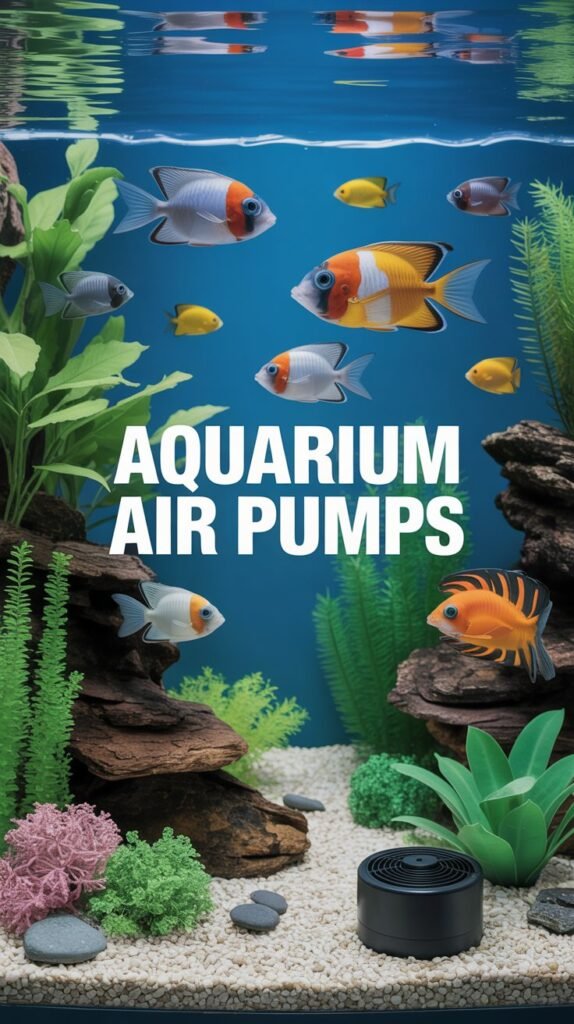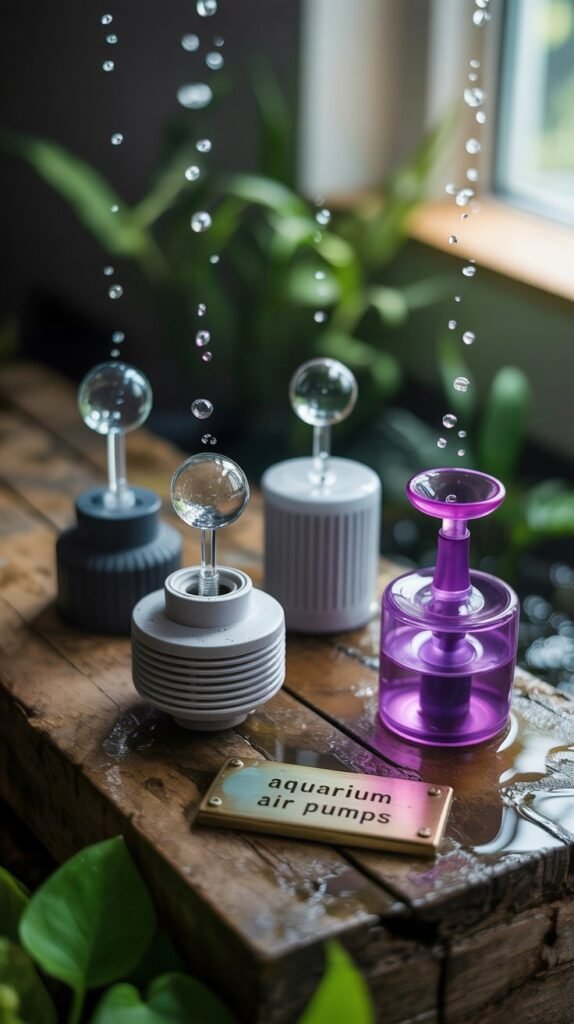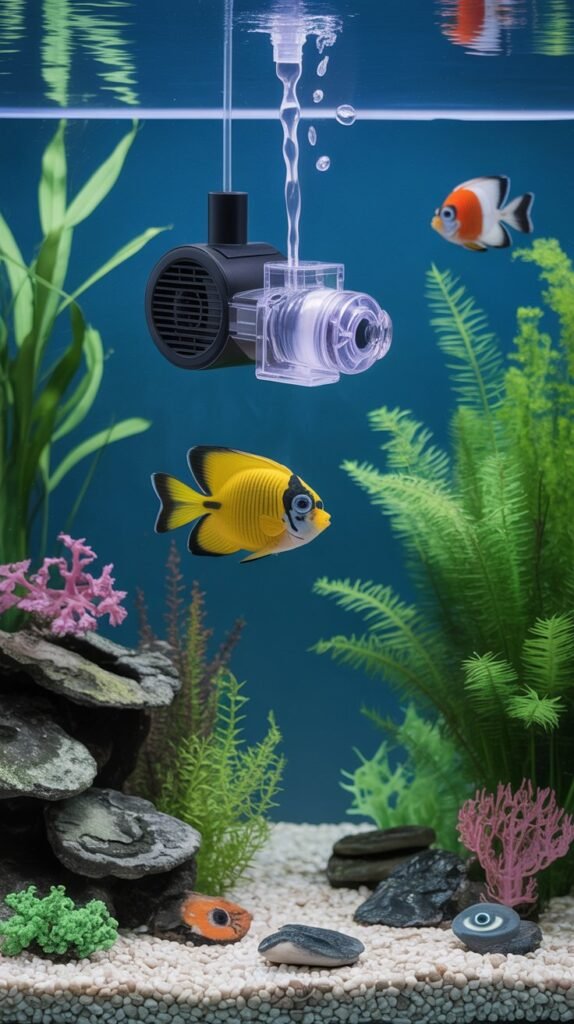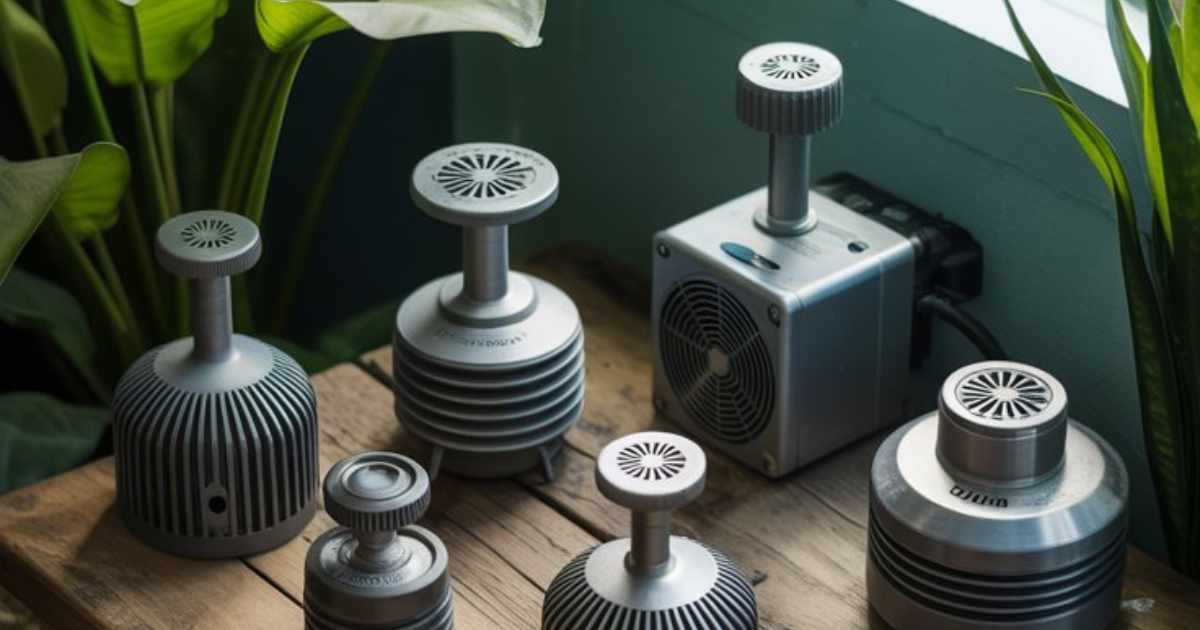Aquariums are more than just decorative pieces—they are thriving ecosystems where aquatic life depends on a balance of oxygen, water movement, and filtration. One of the most crucial yet often overlooked devices in aquariums is the aquarium air pump. Whether you are a beginner fish keeper or a seasoned aquarist, understanding the role of an air pump can drastically improve the health, beauty, and stability of your tank.
In this comprehensive guide, we will explore everything about aquarium air pumps: what they are, why they are essential, types available, installation methods, maintenance tips, buying considerations, and answers to common questions.
What is an Aquarium Air Pump?
An aquarium air pump is a device designed to push air into the water of an aquarium through airline tubing and diffusers such as air stones or bubble wands. The bubbles rising from the air pump don’t directly provide oxygen to fish; instead, they increase surface agitation, which helps oxygen dissolve into the water while releasing carbon dioxide.

In simple terms, air pumps help ensure that your fish and plants get enough oxygen while also enhancing circulation and the overall aesthetics of your tank.
Why Do You Need an Aquarium Air Pump?
While some aquariums may run without air pumps, they provide several benefits that make them almost indispensable in most setups:
1. Improved Oxygen Levels
Fish, shrimp, snails, and beneficial bacteria all need oxygen to survive. An air pump keeps oxygen levels stable, especially in densely stocked aquariums.
2. Prevents Stagnant Water
Still water can lead to poor gas exchange, creating dead zones in your tank. Air pumps keep water moving, reducing the risk of algae blooms and harmful bacteria buildup.
3. Supports Filtration
Some aquarium filters, such as sponge filters and under-gravel filters, rely on air pumps to function. Without an air pump, these filters cannot circulate water effectively.
4. Enhances Aesthetics
Bubble walls, air stones, and bubble curtains create a beautiful, dynamic look inside the aquarium while entertaining both you and your fish.
5. Vital During Power Outages
Battery-powered air pumps can be a lifesaver during power outages, keeping your fish alive by maintaining oxygen levels when your primary filter or circulation system is off.
Types of Aquarium Air Pumps
When choosing an aquarium air pump, it’s essential to understand the different types available.
1. Standard Plug-in Air Pumps
- Run on electricity
- Widely used in home aquariums
- Available in different sizes for tanks from 5 gallons to over 100 gallons
2. Battery-Operated Air Pumps
- Ideal for emergencies and power outages
- Portable, making them perfect for fish transport or fishing bait buckets
3. USB-Powered Air Pumps
- Compact and energy-efficient
- Useful for nano tanks or aquariums where minimal airflow is needed
4. Dual-Outlet Air Pumps
- Feature two outlets for running multiple devices (e.g., two sponge filters or an air stone and a bubble curtain simultaneously)
5. Adjustable Flow Air Pumps
- Allow you to control the air output
- Prevent excessive bubbling in smaller tanks while providing flexibility for larger setups
How to Choose the Right Aquarium Air Pump

Selecting the best air pump depends on several factors:
1. Tank Size
Smaller tanks (5–20 gallons) require low-output pumps, while larger tanks (50–100 gallons) need more powerful pumps to ensure proper aeration.
2. Number of Devices
If you plan to run multiple air stones, sponge filters, or bubble wands, you’ll need a pump with multiple outlets or a strong single-outlet pump with a splitter.
3. Noise Level
Air pumps can vibrate and produce humming sounds. Look for models with quiet operation if your tank is in a bedroom or living room.
4. Energy Efficiency
Since air pumps run 24/7, an energy-efficient model can help lower electricity costs over time.
5. Durability
Choose pumps from reputable brands that can withstand long-term use. Check for strong diaphragms, quality tubing, and well-built casings.
How to Install an Aquarium Air Pump
Setting up an air pump is straightforward but requires attention to detail:
- Choose Placement
- Place the pump outside the aquarium and preferably above the water level.
- If placing below the tank, always use a check valve to prevent water from back-siphoning.
- Connect Airline Tubing
- Attach tubing to the pump outlet.
- Connect the other end to an air stone, sponge filter, or bubble wand.
- Secure with a Check Valve
- This prevents water from flowing backward into the pump during power outages or malfunctions.
- Power On
- Plug the pump into an outlet.
- Adjust airflow if your pump has a regulator.
- Test Functionality
- Look for bubbles rising in the tank.
- Adjust positioning for even distribution of air.
Maintenance of Aquarium Air Pumps

Air pumps require minimal but regular maintenance:
- Clean Air Stones: Over time, they can clog with debris and reduce efficiency. Soak in vinegar or replace them when needed.
- Check Airline Tubing: Replace cracked or hardened tubing.
- Inspect Diaphragm: If airflow weakens, the pump diaphragm may need replacement.
- Keep Dust-Free: Wipe the pump exterior to prevent dust from clogging air intake holes.
Benefits of Using Aquarium Air Pumps
- Promotes healthy fish behavior and reduces stress.
- Increases oxygen levels for beneficial bacteria, aiding in biological filtration.
- Enhances visual appeal with bubbling effects.
- Supports emergency aeration during power failures.
- Essential for certain fish species that thrive in oxygen-rich water (e.g., guppies, goldfish, cichlids).
Common Mistakes to Avoid
- Using an oversized pump for a small tank (can stress fish).
- Forgetting to use a check valve.
- Placing the pump directly on a hard surface, which amplifies noise (use a soft pad or foam underneath).
- Ignoring maintenance of air stones and tubing.
Best Practices for Aquarium Air Pumps
- Run air pumps continuously unless advised otherwise.
- Match air pump output with tank size and inhabitants.
- Use battery backups or portable pumps during power outages.
- Combine with efficient filtration for optimal water quality.
Top Brands for Aquarium Air Pumps
Some trusted brands in the aquarium hobby include:
- Tetra (quiet and beginner-friendly)
- Eheim (durable and reliable)
- Hygger (modern designs, USB options)
- Aqueon (affordable and widely available)
- Fluval (premium build and efficiency)
Final Thoughts
An aquarium air pump is a small investment that brings big benefits to your aquatic setup. From boosting oxygenation and filtration to adding visual beauty, air pumps play a vital role in maintaining a thriving underwater environment. Whether you own a small nano tank or a large community aquarium, choosing the right pump ensures your fish remain healthy, active, and stress-free.
FAQs About Aquarium Air Pumps
Q1. Do all aquariums need an air pump?
Not all aquariums require an air pump. Tanks with powerful filters that provide good surface agitation may not need one. However, in most setups, air pumps are beneficial.
Q2. Can air pumps be too strong for fish?
Yes. Excessive bubbling can stress fish, especially species that prefer calm water. Use an adjustable pump or a valve to control airflow.
Q3. How long should I run my air pump?
Air pumps should generally run 24/7 to maintain oxygen levels, especially in stocked tanks.
Q4. Where should I place my aquarium air pump?
Ideally above the water level. If below, always use a check valve to prevent backflow.
Q5. Do air pumps increase water temperature?
No. Air pumps do not heat the water. In fact, they may slightly lower water temperature by improving circulation.
Q6. How often should I clean air stones?
Every 4–6 weeks or whenever you notice reduced airflow.
Q7. Are air pumps noisy?
Most air pumps produce some vibration noise, but high-quality and modern models are designed to run quietly.
Q8. Can I use one air pump for multiple aquariums?
Yes, with the help of airline tubing splitters or gang valves, but ensure the pump is strong enough.

